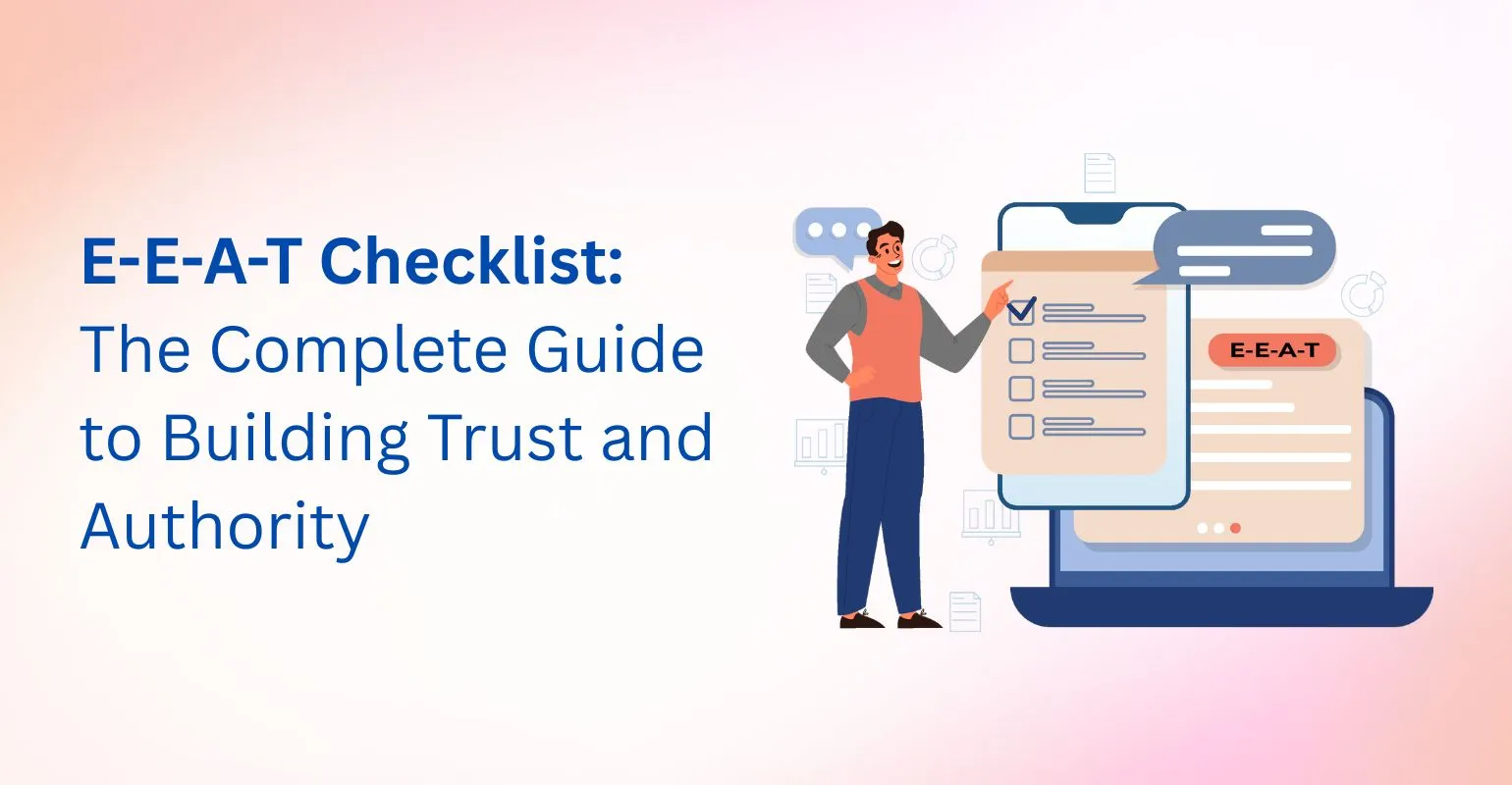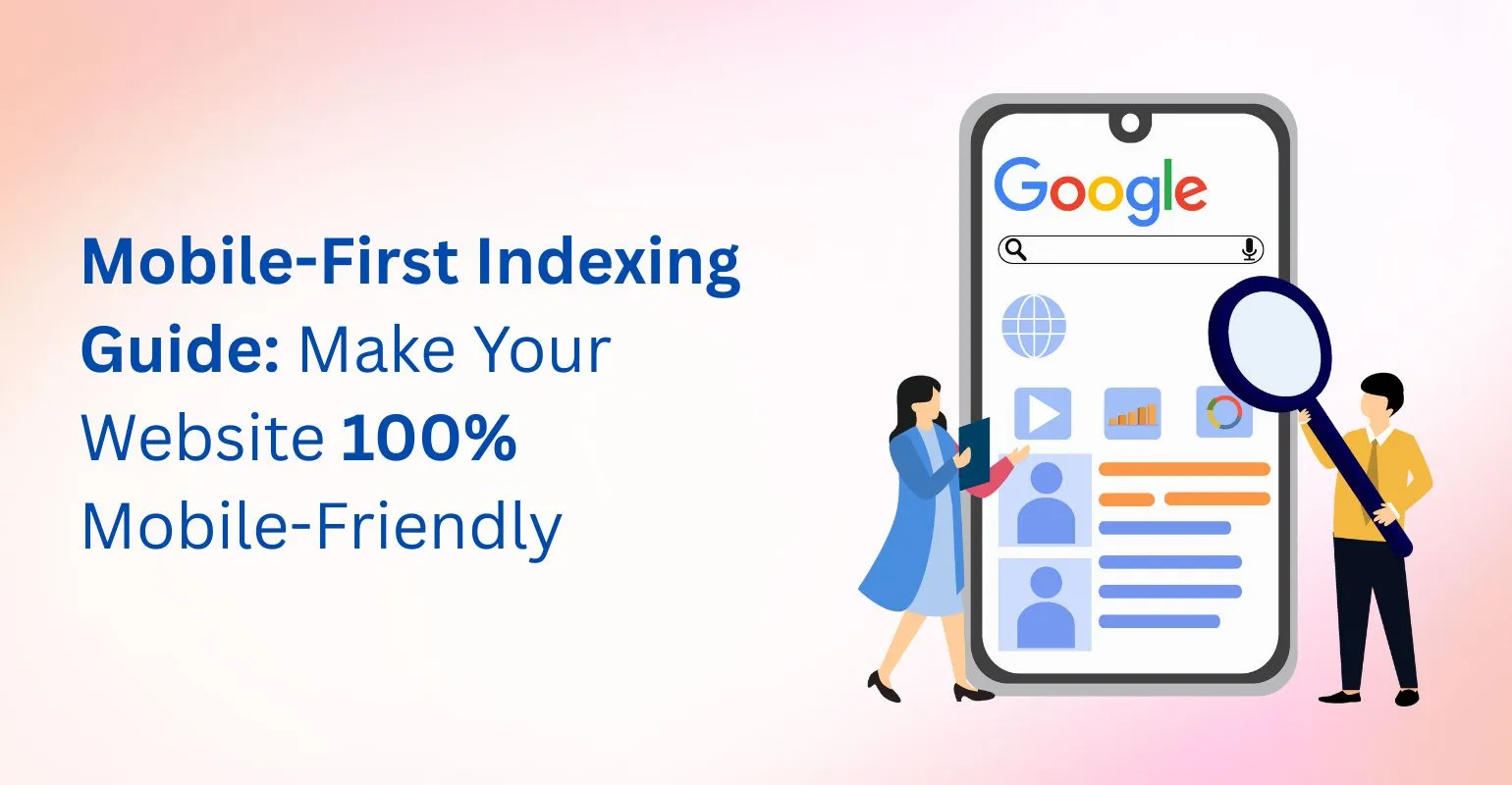blog
How to Boost AI Visibility: The Future of SEO in the Answer Engine Era
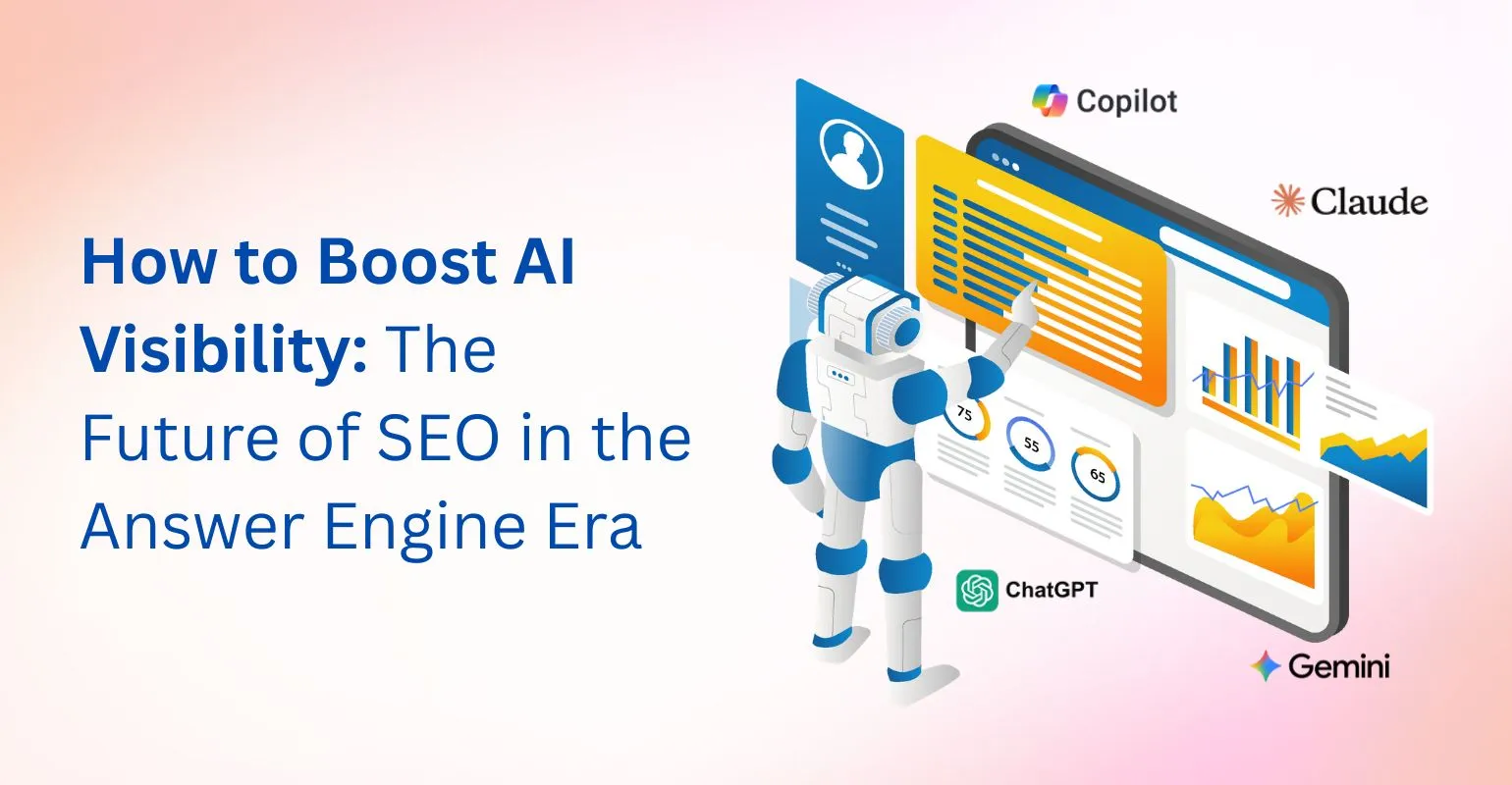
The New Era of Search and Why AI Visibility Matters
The way people search online is changing faster than ever. With AI Overviews, ChatGPT-style responses, and Google’s Search Generative Experience (SGE) becoming mainstream, the traditional SEO playbook is being rewritten.
In this new environment, being on page one of Google is no longer the ultimate goal – being referenced by AI is.
This is where the concept of AI visibility enters the stage. AI visibility refers to how prominently your brand or content appears within AI-powered search results, conversational answers, or voice assistants.
In short, it’s your discoverability in the Answer Engine Era.
Businesses that learn how to boost AI visibility early will not only dominate traditional rankings but also capture attention in AI-generated summaries, chatbot answers, and multimodal search interfaces.
As a digital-first agency, Tangence helps brands transition smoothly into this next era; combining data-driven SEO, Answer Engine Optimization (AEO), and AI-powered content frameworks to future-proof online visibility.
Example of AI Overview results displaying AI-generated answers above traditional links.
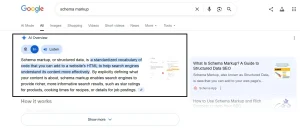
Image Source: Screenshot from Google Search Query: “schema markup”
What Is AI Visibility and Why It is Crucial for SEO
AI visibility is your brand’s ability to be recognized, referenced, and recommended by AI-driven search engines and conversational platforms.
Unlike traditional SEO, which measures success by your position on the search engine results page (SERP), AI visibility measures influence in AI-generated answers.
Here’s a simple breakdown:
- Traditional SEO: Compete for “ranked positions” in Google’s organic results.
- AI SEO: Compete for “mentions” or “citations” in AI-generated responses.
When users ask a question like “What’s the best SEO strategy in 2025?”, Google’s AI Overview might generate an answer referencing top-performing websites or trusted sources. If your content aligns with the right signals, your brand could be cited directly, even if not ranked #1 traditionally.
To boost AI visibility, businesses must optimize content for meaning, not just keywords. That means writing in natural language, structuring answers clearly, and proving credibility through E-E-A-T (Experience, Expertise, Authoritativeness, and Trustworthiness).
Why it matters:
- Expands brand reach beyond SERPs.
- Enhances trust through AI recommendations.
- Future-proofs your content strategy.
- Increases qualified traffic from conversational and voice search.
The key takeaway: The future of SEO isn’t about where you rank, it’s about where AI finds you.
How AI Search Engines Choose What to Show
AI-powered systems like Google SGE, Bing Copilot, and ChatGPT use advanced natural language processing (NLP) models to interpret intent, context, and authority before generating results.
To understand how to boost AI visibility, it helps to know what factors these systems prioritize:
1. Topical Relevance
AI models evaluate how well your content aligns with the semantic meaning of a user’s query and not just the keywords.
2. Structured Data and Schema Markup
Using schema markup (like FAQ, HowTo, and Article) helps AI engines interpret and present your content clearly within answer boxes or summaries.
3. E-E-A-T Signals
Search systems increasingly reward content that demonstrates real experience and authority. This includes bylines, author bios, and credible citations.
4. Content Format and Readability
AI prefers well-structured, concise, and clearly formatted text; often written in a Q&A or list style.
5. Recency and Trust
Regular updates and fresh data increase your chances of being referenced in real-time AI responses.
If your goal is to boost AI visibility, structure your website for machine comprehension, not just human readability. Think of it as training AI to understand and trust your expertise
Key Strategies to Boost AI Visibility in 2025
To truly boost AI visibility in 2025, brands must evolve from keyword-stuffed pages to answer-first, AI-ready content ecosystems.
Generative search systems like Google’s Search Generative Experience (SGE), ChatGPT, and Perplexity.ai reward content that provides accurate, conversational, and structured answers.
Below are the most effective strategies to align your SEO with this AI-powered future.
1. Optimize for Conversational Queries
Search behavior is becoming increasingly conversational. Users now phrase queries like they’re talking to a virtual assistant, asking “How do I boost AI visibility for my brand?” instead of simply typing “AI visibility tips.”
To adapt:
- Identify long-tail, question-based keywords using tools such as People Also Ask, AnswerThePublic, and ChatGPT query analysis.
- Incorporate natural language phrasing throughout your content.
- Anticipate why the user is asking and deliver value-rich, direct responses.
When your content reflects authentic, human-like phrasing, AI models are more likely to pull it into generated summaries, directly improving your AI visibility footprint.
Example of Google’s ‘People Also Ask’ section showing conversational queries related to schema markup, a valuable tool for identifying question-based keywords to boost AI visibility.
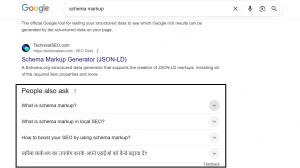
Image Source: Screenshot from Google Search Query showing People Also Ask Section: “schema markup”
2. Implement Structured Data (Schema Markup)
AI systems rely on structured data to interpret, categorize, and display content correctly. Schema markup provides this structure.
Here’s how to do it effectively:
- Add FAQ, HowTo, and Article schema to key content pages.
- Mark up elements like author, date published, headline, and article body to strengthen machine readability.
- Validate your schema using Google’s Rich Results Test.
Research shows that pages with proper schema markup are 20–30% more likely to appear in AI-driven answers or featured snippets.
This simple step helps both search engines and AI systems “understand” your expertise and context, making it easier to boost AI visibility across multiple platforms.
3. Strengthen Your E-E-A-T (Experience, Expertise, Authoritativeness, Trustworthiness)
E-E-A-T is now at the heart of AI-based ranking algorithms. Generative engines prefer credible sources with verifiable experience.
| E-E-A-T Element | What It Means | How to Apply for AI Visibility |
|---|---|---|
| Experience | Real-world expertise | Add personal insights, data, or results |
| Expertise | Industry knowledge | Highlight qualifications, link to research |
| Authoritativeness | Credibility in niche | Earn mentions, backlinks, and reviews |
| Trustworthiness | Reliability & transparency | Cite sources, include contact & privacy info |
Ways to enhance your E-E-A-T signals:
- Add detailed author bios showing credentials, industry expertise, and experience.
- Cite primary research or authoritative industry sources.
- Showcase real-world case studies and success metrics.
4. Create AI-Readable Content Formats
Generative AI models process content differently from humans. To make your pages AI-friendly:
- Break up large text blocks with H2s and H3s.
- Use bullet lists, numbered steps, and concise paragraphs (2–3 lines).
- Include Q&A sections for clarity.
This formatting improves information retrieval accuracy, helping AI quickly identify answers within your text.
Structured content ensures your site appears more often in summarized AI responses, further enhancing your AI visibility score.
5. Build Topic Clusters Around AI Search Intent
Google and AI models prefer content that demonstrates topical authority. Create topic cluster – interconnected pages built around a central pillar.
Example structure:
- Main Pillar: AI SEO Optimization Guide
- Cluster Blogs:
-
- How to Boost AI Visibility
- Answer Engine Optimization Explained
- Voice Search Optimization for 2025
By internally linking related articles, you signal depth and expertise on the subject.
This networked structure helps AI understand contextual relationships and boosts visibility across entire content ecosystems, not just individual pages.
6. Leverage Multimedia for AI Understanding
AI models like Gemini and GPT-4o are multimodal, capable of analyzing text, images, and even video. To capitalize on this:
- Add infographics, explainer videos, and data charts that support your written insights.
- Include descriptive alt text with contextual keywords such as “AI SEO optimization” or “boost AI visibility.”
- Use captions and transcripts for video content.
Multimedia elements make your content more engaging and provide contextual reinforcement that AI engines use to validate relevance, further strengthening your AI visibility footprint.
7. Monitor AI Citations and Mentions
Visibility doesn’t end with publishing, it continues with measurement. Tracking how and where AI engines reference your content is essential.
Use monitoring tools like:
- Perplexity.ai (for generative mentions)
- ChatGPT Browse Mode (to test prompt responses)
- Google’s AI Overview (to track citations)
By understanding when your brand appears in AI-generated content, you can refine your strategies, strengthen topical authority, and ensure sustained growth.
Pro tip: Create a monthly “AI Visibility Report” tracking citation frequency, engagement metrics, and visibility share, just as you would with traditional SEO analytics.
The Rise of Answer Engine Optimization (AEO)
Answer Engine Optimization (AEO) represents the evolution of traditional SEO; a shift from ranking for blue links to being referenced by AI-driven systems.
As search engines like Google, Bing, and ChatGPT transition into Answer Engines, understanding AEO is now crucial to boost AI visibility and future-proof your content strategy.
| Factor | Traditional SEO | Answer Engine Optimization (AEO) |
|---|---|---|
| Primary Goal | Rank on SERPs | Be cited by AI-generated answers |
| Optimization Focus | Keywords & backlinks | Structured data & context |
| Content Style | Informational | Conversational Q&A |
| Tools Used | Google Search Console, Ahrefs | Perplexity, ChatGPT Browse, Schema Validators |
| Key Metric | SERP position | AI citation frequency |
Here’s what defines AEO in 2025 and beyond:
- SEO vs. AEO:
- SEO gets your page ranked.
- AEO gets your brand quoted, summarized, or referenced in AI-generated responses.
- Purpose of AEO:
To ensure your content is recognized and cited by AI systems that answer user questions using generative models. - Core Components of AEO:
- Question-Based Optimization: Frame H2s and H3s as real-world user questions.
- Concise, Direct Answers: Deliver factual, structured answers within the first 2–3 sentences.
- Schema Markup Integration: Implement FAQ, HowTo, and Article schemas so AI can parse and reference your content correctly.
- Conversational Tone: Write in a human, natural, and voice-friendly tone.
Result: When implemented strategically, AEO helps brands boost AI visibility, build trust, and dominate the new generation of AI-powered search experiences.
Measuring and Tracking AI Visibility
Tracking AI visibility is becoming a core part of modern SEO reporting. As AI Overviews and generative search experiences expand, knowing where and how your content is referenced by AI systems provides valuable insight into your brand’s true reach.
To effectively measure and optimize AI visibility, focus on these methods:
1. Google AI Overview Tracking:
- Search your top keywords and analyze if your website is mentioned or cited in AI Overviews.
- Regularly record positions and snippets that include your brand or content.
2. Monitor ChatGPT and Perplexity Mentions:
- Input your target questions into ChatGPT, Perplexity, or Claude to see if your site’s content appears or influences the generated response.
- This helps you understand your AI citation frequency; a new visibility metric.
3. Voice Search Analytics:
- Use analytics tools and smart speaker integrations (Google Assistant, Alexa) to track voice-triggered mentions and brand name recall.
4. Build an “AI Visibility Index”: Track the following KPIs monthly
- Frequency of AI-generated citations
- Mention share in AI answers
- CTR from AI-driven search snippets
Pro Tip:
Brands that track and optimize AI visibility metrics gain a measurable advantage in authority, brand discoverability, and long-term SEO scalability.
By proactively measuring performance, you can adapt faster, ensuring your brand continues to boost AI visibility across emerging AI-powered search ecosystems.
| Tool | Function | Benefit |
|---|---|---|
| Perplexity.ai | AI answer referencing | Check how your content appears in AI responses |
| ChatGPT Browse Mode | Content testing | See if AI summarizes your pages |
| Google SGE Preview | AI Overview testing | Analyze visibility in generative search |
| Ahrefs / Semrush | Keyword + backlink tracking | Correlate AI mentions with SEO growth |
Common Mistakes That Limit AI Visibility
Even the most experienced SEO professionals make errors when optimizing for AI-first search environments. To boost AI visibility effectively, you must avoid these common pitfalls that limit your content’s ability to be cited by answer engines.
Here are the top mistakes and how to correct them:
1. Keyword Stuffing and Unnatural Language:
- Overusing focus keywords makes your content sound robotic.
- AI prefers natural, conversational writing with context-rich phrasing.
2. Ignoring Schema Markup:
- Without structured data (FAQ, HowTo, Article), AI systems can’t easily interpret or cite your content.
- Always validate schema using Google’s Rich Results Test.
3. Neglecting Content Freshness:
- Outdated statistics and stale information reduce trust.
- Update high-performing pages every 3–6 months to maintain AI relevance.
4. Weak E-E-A-T Signals:
- Missing author bios, unclear credentials, or lack of external references can prevent AI from recognizing authority.
- Showcase expert authorship and credible citations.
5. Poor Formatting and No Visuals:
- Text-heavy pages reduce readability.
- Use bullet lists, headings, infographics, and charts to improve AI comprehension.
Best Practice:
Write for humans, format for machines. Create helpful, structured, and authoritative content and AI systems will reward you with increased exposure.
By addressing these mistakes, your brand can steadily boost AI visibility, enhance topical authority, and remain competitive in the fast-evolving Answer Engine Era.
The Future of SEO: AI Visibility and Human-Centric Optimization
As AI continues to redefine search, the SEO industry is moving toward trust-driven, intent-based visibility.
By 2026, over 60% of search interactions will involve AI or voice assistants (according to industry forecasts). The brands that win will be those that optimize for AI discoverability, not just keyword rankings.
Tangence, a leading digital marketing agency, helps businesses integrate AI visibility frameworks into their SEO strategies; combining AEO, schema markup, and E-E-A-T optimization for measurable growth.
In the Answer Engine Era, visibility is no longer just about being seen, it’s about being understood and cited by AI.
Partner with Tangence to build your brand’s AI-first SEO strategy and stay visible in the conversations that matter most.
Frequently Asked Questions
1. What does ‘boost AI visibility’ mean in SEO?
It means optimizing your content to appear in AI-generated answers, summaries, and chat-based search results like Google SGE or ChatGPT.
2. How is AI visibility different from traditional SEO visibility?
Traditional SEO focuses on rank position; AI visibility focuses on being referenced or quoted by AI engines during user interactions.
3. What’s the best way to boost AI visibility in 2025?
Focus on conversational content, schema markup, E-E-A-T signals, and AEO practices that align with generative search systems.
4. How does Answer Engine Optimization (AEO) relate to AI visibility?
AEO is the technical process of making your content answer-ready; a direct route to boost AI visibility across AI-powered search engines.
5. Can AI visibility improve organic traffic?
Yes. Being cited in AI responses builds brand trust and drives high-intent traffic from conversational platforms.
6. How can small businesses boost AI visibility effectively?
Create niche-specific, question-based content and implement structured data. Working with an expert SEO agency like Tangence can accelerate results.
7. How can Tangence help me improve AI visibility?
Tangence offers AI-powered SEO and AEO services, helping brands structure, optimize, and measure content that performs across AI-driven platforms.



